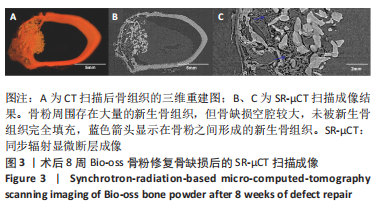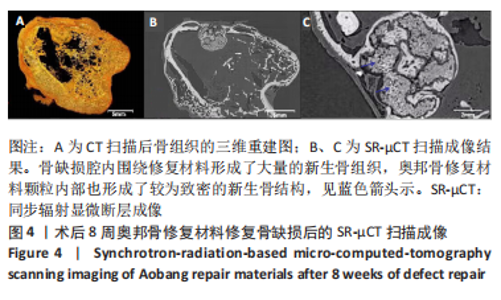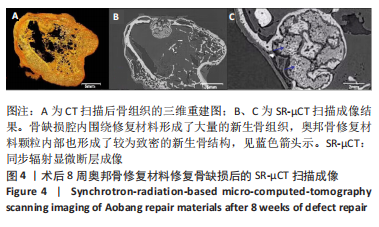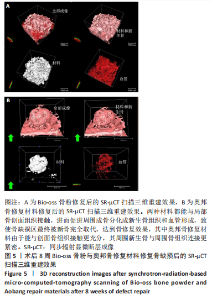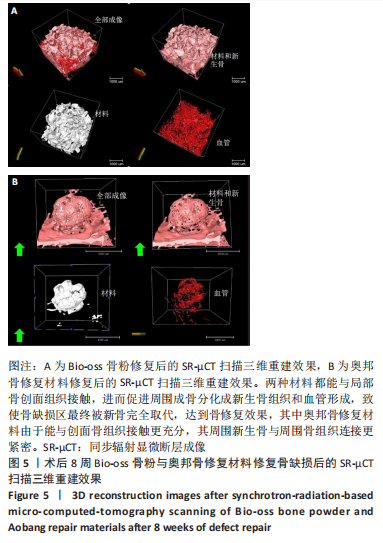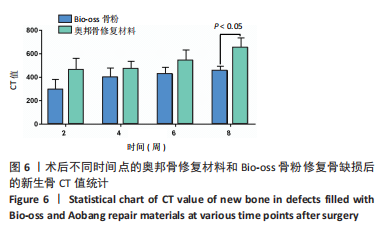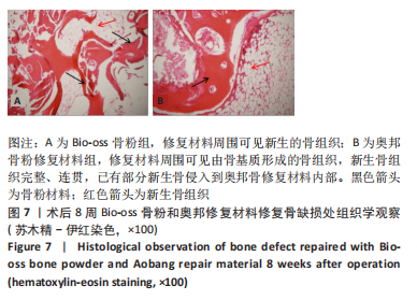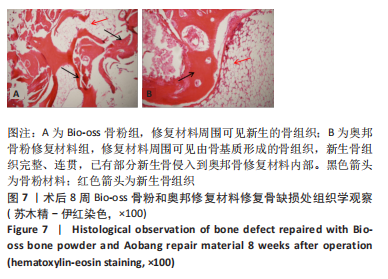[1] GÜLER-YÜKSEL M, HOES JN, BULTINK IEM, et al. Glucocorticoids, Inflammation and Bone. Calcif Tissue Int. 2018;102(5):592-606.
[2] TAN B, TANG Q, ZHONG Y, et al. Biomaterial-based strategies for maxillofacial tumour therapy and bone defect regeneration. Int J Oral Sci. 2021;13(1):9.
[3] 魏晨旭,何怡文,王聃,等.组织工程学中骨修复材料的研究热点与进展[J].中国组织工程研究,2020,24(10):1615-1621.
[4] LEI F, LI M, LIN T, et al. Treatment of inflammatory bone loss in periodontitis by stem cell-derived exosomes. Acta Biomater. 2022;141: 333-343.
[5] WEN Y, YANG H, WU J, et al. COL4A2 in the tissue-specific extracellular matrix plays important role on osteogenic differentiation of periodontal ligament stem cells. Theranostics. 2019;9(15):4265-4286.
[6] GARCÍA JR, GARCÍA AJ. Biomaterial-mediated strategies targeting vascularization for bone repair. Drug Deliv Transl Res. 2016;6(2):77-95.
[7] TAN B, TANG Q, ZHONG Y, et al. Biomaterial-based strategies for maxillofacial tumour therapy and bone defect regeneration. Int J Oral Sci. 2021;13(1):9.
[8] 陈威,陈志方,张薇,等.奥邦骨修复材料在下颌阻生第三磨牙拔除同期行GBR中的临床疗效?[J].临床口腔医学杂志,2019,35(7): 421-423.
[9] 易刚,杨静,张磊,等.奥邦骨与自体骨治疗跟骨骨折骨缺损的比较[J].中国矫形外科杂志,2019,27(8):706-711.
[10] ZHUANG G, MAO J, YANG G, et al. Influence of different incision designs on bone increment of guided bone regeneration (Bio-Gide collagen membrane +Bio-OSS bone powder) during the same period of maxillary anterior tooth implantation. Bioengineered. 2021;12(1):2155-2163.
[11] 向国昌,蹇雪春.自体碎骨结合Bio-OSS骨粉修复颌骨囊肿术后骨缺损疗效观察[J].中国美容医学,2021,30(4):55-58.
[12] DUAN X, LI N, CHEN X, et al. Characterization of Tissue Scaffolds Using Synchrotron Radiation Microcomputed Tomography Imaging. Tissue Eng Part C Methods. 2021;27(11):573-588.
[13] IZADIFAR Z, CHAPMAN LD, CHEN X. Computed tomography diffraction-enhanced imaging for in situ visualization of tissue scaffolds implanted in cartilage. Tissue Eng Part C Methods. 2014;20(2):140-148.
[14] 周密,郭子宽,张树明,等.兔股骨近端骨性结构的解剖研究[J].军医进修学院学报,2010,31(2):167-168.
[15] SHUE L, YUFENG Z, MONY U. Biomaterials for periodontal regeneration: a review of ceramics and polymers. Biomatter. 2012;2(4):271-277.
[16] WOO HN, CHO YJ, TARAFDER S, et al. The recent advances in scaffolds for integrated periodontal regeneration. Bioact Mater. 2021;6(10): 3328-3342.
[17] SHEIKH Z, HAMDAN N, IKEDA Y, et al. Natural graft tissues and synthetic biomaterials for periodontal and alveolar bone reconstructive applications: a review. Biomater Res. 2017;21:9.
[18] 刘旒,周箐竹,龚桌,等.胶原/无机材料构建组织工程骨的特点及制造技术[J].中国组织工程研究,2021,25(4):607-613.
[19] 瞿向阳,蒋电明,安洪.以钙磷骨水泥为载体重组人血管内皮细胞生长因子与重组人骨形态发生蛋白-2复合体对异体脱蛋白骨修复骨关节缺损的促进效应[J].中国组织工程研究与临床康复, 2007,11(27):5436-5439.
[20] 易刚,张磊,扶世杰,等.双钢板固定结合奥邦植骨材料与自体髂骨植骨治疗复杂胫骨平台骨折的比较[J].中国组织工程研究,2019, 23(16):2486-2492.
[21] DENG D, XU C, SUN P, et al. Crystal structure of the human glucose transporter GLUT1. Nature. 2014;510(7503):121-125.
[22] YUAN Y, KONG F, XU H, et al. Cryo-EM structure of human glucose transporter GLUT4. Nat Commun. 2022;13(1):2671.
[23] FIDALGO G, PAIVA K, MENDES G, et al. Synchrotron microtomography applied to the volumetric analysis of internal structures of Thoropa miliaris tadpoles. Sci Rep. 2020;10(1):18934.
[24] MANZOOR MAP, AGRAWAL AK, SINGH B, et al. Morphological characteristics and microstructure of kidney stones using synchrotron radiation μCT reveal the mechanism of crystal growth and aggregation in mixed stones. PLoS One. 2019;14(3):e0214003.
[25] MA RH, LUO XB, LI Q, et al. The systematic classification of urinary stones combine-using FTIR and SEM-EDAX. Int J Surg. 2017;41:150-161.
[26] XU H, LANGER M, PEYRIN F. Quantitative analysis of bone microvasculature in a mouse model using the monogenic signal phase asymmetry and marker-controlled watershed. Phys Med Biol. 2021;66(12). doi: 10.1088/1361-6560/ac047d.
[27] CHEN Y, ZHANG T, WAN L, et al. Early treadmill running delays rotator cuff healing via Neuropeptide Y mediated inactivation of the Wnt/β-catenin signaling. J Orthop Translat. 2021;30:103-111.
[28] GAUTHIER R, FOLLET H, OLIVIER C, et al. 3D analysis of the osteonal and interstitial tissue in human radii cortical bone. Bone. 2019;127: 526-536.
[29] BERNHARDT R, VAN DEN DOLDER J, BIERBAUM S, et al. Osteoconductive modifications of Ti-implants in a goat defect model: characterization of bone growth with SR muCT and histology. Biomaterials. 2005;26(16):3009-3019.
|

